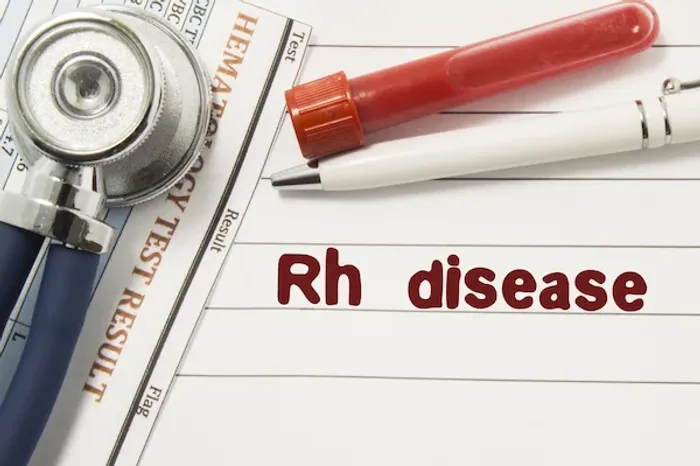Rh Incompatibility: A Complete Guide for Expecting Parents
Learn everything expecting parents need to know about Rh incompatibility, including causes, prevention, treatment, and safe pregnancy planning.

Written by Dr. Rohinipriyanka Pondugula
Reviewed by Dr. Vasanthasree Nair MBBS
Last updated on 29th Sep, 2025

Introduction
Discovering you're pregnant is a joyful experience, often accompanied by a flurry of tests and new medical terms. One term you might encounter is "Rh factor." If your doctor mentions you are Rh-negative, it's natural to feel concerned. However, Rh incompatibility is a well-understood and highly manageable condition. This guide will walk you through everything you need to know, from the basic science to the simple, effective prevention strategies that protect your baby. We'll demystify what it means to have an Rh-negative blood type during pregnancy, explain how modern medicine prevents problems, and outline the steps for a healthy pregnancy and newborn. Understanding Rh incompatibility is the first step toward eliminating worry and focusing on the excitement of welcoming your new baby.
What is the Rh Factor? The Basics of Blood Types
When we talk about blood types, we usually think of A, B, AB, and O. But there's another crucial factor: the Rhesus (Rh) factor. This is a specific protein found on the surface of your red blood cells. If you have this protein, your blood type is Rh-positive (e.g., A+ or O+). If you don't have it, your blood type is Rh-negative (e.g., A- or O-). The presence or absence of this protein is an inherited trait, much like your eye colour.
Rh-Positive vs. Rh-Negative: What's the Difference?
For most people, being Rh-positive or Rh-negative has no impact on daily health. Rh-positive is far more common. In the United States, about 85% of the population is Rh-positive. Being Rh-negative is less common but is not a disorder or illness. The significance of your Rh factor arises almost exclusively during pregnancy, when your blood has the potential to mix with your baby's blood.
How is Rh Factor Inherited? The Role of Genetics
Your Rh status is determined by the genes you inherit from your parents. A person who is Rh-positive can have either two positive genes (++) or one positive and one negative gene (+-). An Rh-negative person must have two negative genes (–). This becomes important when considering the baby's father. If the mother is Rh-negative and the father is Rh-positive, there is a high probability the baby will be Rh-positive. This mismatch is what leads to the potential for Rh incompatibility.
Understanding Rh Incompatibility: When Does It Become a Problem?
Rh incompatibility itself isn't a disease. It's a situation that can lead to a problem called Rh sensitisation. This occurs only when an Rh-negative mother carries an Rh-positive baby.
The Risk Scenario: Rh-Negative Mother and Rh-Positive Baby
During pregnancy, the mother's and baby's blood systems are separate. However, small amounts of the baby's blood can cross the placenta into the mother's bloodstream, typically during delivery, but also after a miscarriage, abortion, or invasive prenatal test. If the baby is Rh-positive, the mother's Rh-negative immune system will see the baby's Rh-positive red blood cells as foreign invaders, much like bacteria or a virus.
What is Rh Sensitisation? The Body's Mistaken Response
In response to this "invasion," the mother's immune system springs into action. It starts producing antibodies designed to attack and destroy the Rh-positive blood cells. This process is called Rh sensitisation. Crucially, this sensitisation rarely affects a first pregnancy because the mixing of blood usually happens at delivery. The problem arises in subsequent pregnancies. If the mother carries another Rh-positive baby, her now-sensitised immune system can quickly produce large numbers of antibodies that can cross the placenta and attack the baby's red blood cells.
Health topic carousel:
Doctor's speciality: General Practitioner
Text: Consult a Specialist for the best advice
How Does Sensitisation Happen? Key Risk Events
Sensitisation can occur whenever foetal blood enters the maternal circulation. Key events include:
During a First Pregnancy: While rare, sensitisation can happen late in pregnancy or during traumatic delivery.
After Miscarriage, Abortion, or Ectopic Pregnancy: Any pregnancy loss can expose the mother to the baby's blood.
During Invasive Prenatal Tests: Procedures like amniocentesis or chorionic villus sampling (CVS) carry a small risk of blood mixing.
After an Injury or Trauma to the Abdomen: A hard blow to the stomach can cause bleeding in the uterus.
During Manual Rotation of a Breech Baby: An obstetric manoeuvre before delivery.
This is why it's vital for Rh-negative mothers to receive preventive treatment after any of these events, not just after a full-term delivery.
Effective Prevention: The Role of Rh Immunoglobulin (RhoGAM)
The great news is that Rh incompatibility is almost entirely preventable. The prevention is a safe and effective injection called Rh immunoglobulin, commonly known as RhoGAM.
What is RhoGAM and How Does It Work?
RhoGAM is not a vaccine. It contains antibodies against the Rh factor. When given to an Rh-negative mother, it "mops up" any Rh-positive foetal blood cells that may have entered her bloodstream before her immune system has a chance to recognise them and produce its own antibodies. It's essentially a stealth clean-up crew that prevents sensitisation from occurring.
When is the RhoGAM Shot Administered?
The protocol is straightforward and highly effective:
Routine Prenatal Care: An Rh-negative mother will typically receive a RhoGAM injection around the 28th week of pregnancy. This protects her for the remainder of the pregnancy.
After Delivery: If the baby is confirmed to be Rh-positive, the mother will receive a second dose within 72 hours after delivery.
After a Sensitising Event: A dose is given after any potential sensitising event, such as those listed above (miscarriage, trauma, etc.).
This simple intervention is over 99% effective in preventing Rh sensitisation. If you are Rh-negative and your condition requires monitoring, consulting a doctor online with Apollo24|7 can provide immediate guidance on your prevention plan.
Treatment Options if Sensitisation Has Occurred
If a mother is already sensitised from a previous pregnancy, RhoGAM will not work. The focus then shifts to carefully managing the current pregnancy to protect the baby.
Managing a Pregnancy with a Sensitised Mother
The doctor will monitor the baby closely for signs of haemolytic disease.
Doppler Ultrasound: This measures blood flow in an artery in the baby's brain, which can indicate anaemia.
Amniocentesis: This test can measure the level of bilirubin in the amniotic fluid.
Intrauterine Blood Transfusion: If the baby develops severe anaemia in the womb, a transfusion of red blood cells can be given directly into the baby's umbilical cord. This is a highly specialised procedure that can be life-saving.
Treating Haemolytic Disease in the Newborn
If a baby is born with HDN, treatment depends on the severity.
Phototherapy: This is a common treatment for jaundice, using special blue lights to help the baby's body break down excess bilirubin.
Blood Transfusions: For severe anaemia, the baby may need a transfusion to replace the damaged red blood cells with healthy ones.
Planning for a Future Pregnancy
If you are Rh-negative and planning another pregnancy, your history is key. If you have never been sensitised, you can expect the standard RhoGAM prophylaxis to be highly effective. If you are already sensitised, it's crucial to discuss your history with an obstetrician specialising in high-risk pregnancies before conceiving again. They can outline a monitoring and treatment plan to give your next baby the best possible outcome.
Conclusion
Understanding Rh incompatibility transforms it from a frightening unknown into a manageable aspect of prenatal care. Thanks to medical advances, particularly the development of Rh immunoglobulin (RhoGAM), the serious complications of this condition are now exceedingly rare. The key is proactive and consistent care. If you are pregnant or planning to be, one of the first steps is to get a simple blood test to determine your blood type and Rh factor. If you discover you are Rh-negative, rest assured that your healthcare team has a clear, proven protocol to ensure your health and the health of your baby. By following their guidance and receiving timely treatment, you can focus on the joy of your pregnancy with confidence. If you have any concerns about your Rh status or prenatal care, booking a physical visit to a doctor with Apollo24|7 is a great way to get personalised, expert advice.
Frequently Asked Questions (FAQs)
Can Rh incompatibility cause a miscarriage?
Rh incompatibility itself does not cause miscarriage. However, a miscarriage (or abortion) can be an event that causes Rh sensitisation in an Rh-negative woman if she is not treated with RhoGAM. This sensitisation can then affect future pregnancies.
What are the signs of haemolytic disease in a newborn?
Signs can include jaundice (yellowing of the skin and eyes), paleness, enlarged liver or spleen, and lethargy. These symptoms are closely monitored by paediatricians in babies known to be at risk.
Does the father need to be tested?
Yes, if the mother is Rh-negative, testing the father's Rh status can be helpful. If the father is also Rh-negative, the baby will be Rh-negative, and there is no risk of incompatibility. If the father is Rh-positive, your doctor will proceed with the standard prevention plan.
What happens if I miss the RhoGAM shot after delivery?
The risk of sensitisation is highest after delivery. If you miss the 72-hour window, contact your doctor immediately. Receiving the injection as soon as possible is still better than not receiving it at all, as it may reduce the chance of sensitisation.
Is the RhoGAM shot safe?
RhoGAM has been used safely for decades. It is made from human plasma that is rigorously screened and treated to eliminate the risk of transmitting infections. The most common side effects are minor, like soreness at the injection site.
Health topic carousel:
Doctor's speciality: General Practitioner
Text: Consult a Specialist for the best advice




